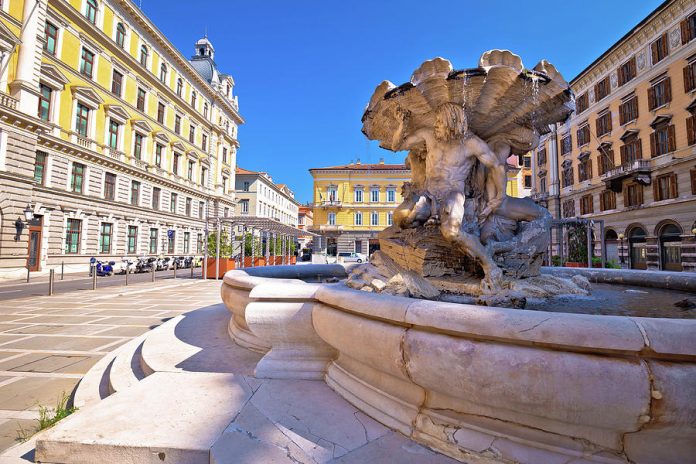by InTrieste
Nestled in the heart of Trieste, the historic Palazzo Ex Compartimentale FFSS, a monumental edifice long forgotten and left to decay, is poised for a grand revival. The landmark, which once symbolized the city’s bustling railways, is set to undergo a comprehensive transformation that promises to breathe new life into its storied halls and the surrounding area.
A Glimpse into History
Constructed between 1894 and 1895 under the direction of architect Raimondo Sagors, the palazzo has stood as a testament to Trieste’s industrial might. Encompassing an entire city block with a gross area of 17,800 square meters, the building historically housed commercial activities on its ground floor and the Teatro del Dopolavoro Ferroviario, later Cinema Vittorio Veneto, at its rear. State Railways occupied its offices until the early 2000s, after which the building fell into disuse.
The Sale and Vision of PVV Investments
In 2004, as railway employees were relocated, the process to sell the building began. The latest tender, issued in July 2020, culminated in October 2020 with PVV Investments, based in Mestre, acquiring the property for approximately ten million euros. Their vision is ambitious: to transform the once derelict palace into a vibrant hub of activity, featuring a hotel, residences, offices, and commercial spaces.
The Project’s Blueprint
PVV’s plan is comprehensive, entailing the complete restoration and reconfiguration of the building. Highlights include:
- Conversion into a hotel and residential facility
- Preservation of the ground floor’s commercial usage
- Modification of the roof to create a panoramic terrace with dining, a pool, and an event space
Crucially, the project also includes public access to certain private areas, fostering community integration.
Preserving Heritage Amid Modernization
The building’s historical significance means it is subject to stringent preservation laws. The Ministry of Culture’s Directorate General for Archaeology, Fine Arts, and Landscape has approved the project, emphasizing that changes to the roof, including the new terrace, are permissible as they remain invisible from the ground, ensuring no disruption to the building’s historical appearance.
Urban Regeneration: A Broader Context
While Italy’s national laws lack a precise definition of “urban regeneration,” regional legislation and current parliamentary debates focus on revitalizing disused urban areas. PVV’s project aligns with these principles, aiming to enhance energy efficiency, reduce soil consumption, and stimulate local economies.
Revitalizing Piazza Vittorio Veneto
Integral to the project is the rejuvenation of Piazza Vittorio Veneto. PVV proposes restoring the Triton Fountain, paving, and greening the space at an estimated cost of 837,000 euros. These efforts are designed to make the piazza more attractive and functional for residents and visitors alike.
Economic and Social Benefits
The project promises significant benefits for Trieste:
- A substantial investment of 70 million euros, showcasing the city’s appeal to European investors
- Revitalization of an abandoned landmark, enhancing local safety and aesthetics
- Improvements to Piazza Vittorio Veneto, enriching the urban landscape
- Creation of a new attractive area for citizens and tourists, bridging historical elegance with modern vibrancy
- Provision of space within the building for the Municipality to promote cultural and tourist initiatives
- An expected influx of 124,338 annual guests, boosting local businesses and increasing tourism tax revenues by approximately 273,544 euros annually
- Generation of 120 direct jobs and 50 indirect jobs, fostering local employment
Looking Ahead
As Trieste’s city council deliberates on granting the necessary construction permits, the vision of a revitalized Palazzo Ex Compartimentale FFSS stands as a beacon of urban regeneration. The proposed project by PVV Investments promises not only to restore a significant piece of the city’s heritage but also to stimulate economic growth and enhance the quality of life for its residents.
This ambitious restoration effort underscores Trieste’s ongoing transformation, blending its rich history with contemporary advancements, and setting a precedent for urban renewal projects across Italy.
4o





























